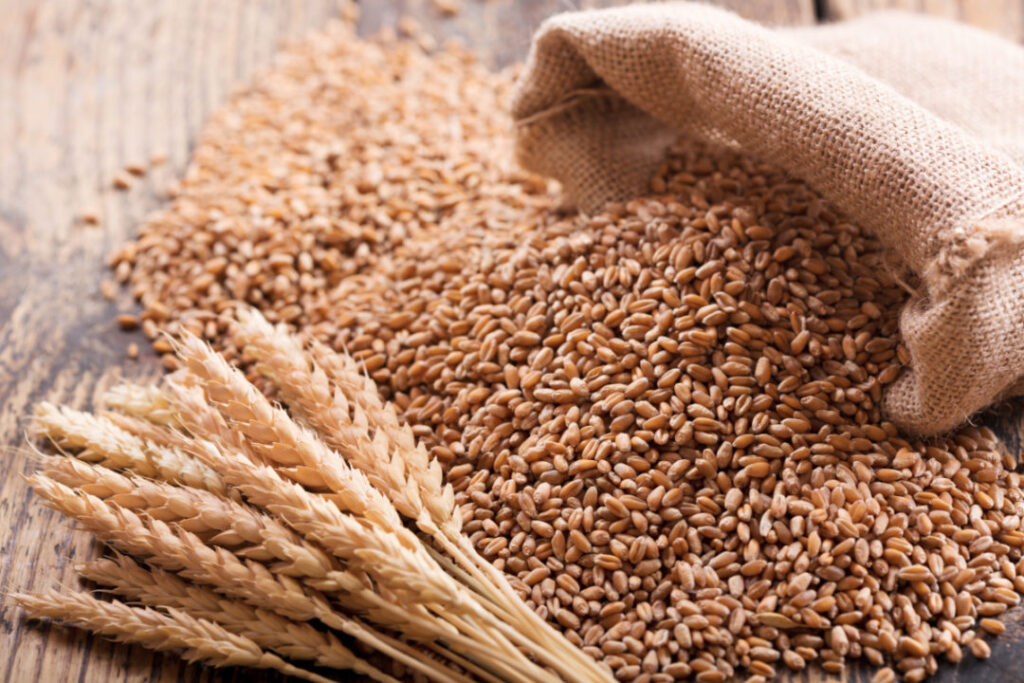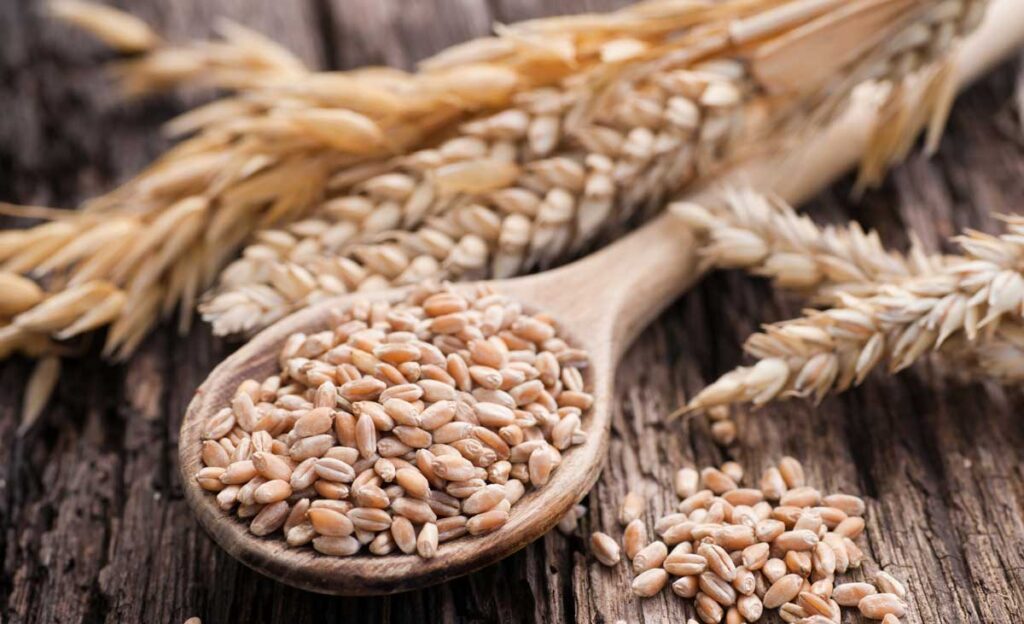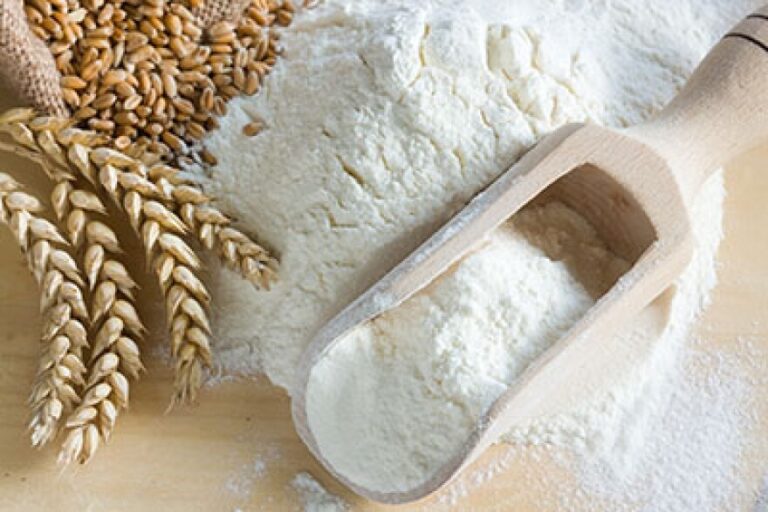As I stand here in the midst of a vast golden field, bathed in the warm glow of the setting sun, I can’t help but marvel at the incredible bounty that Mother Nature bestows upon us. It’s a sight that has been ingrained in my memory since childhood, one that never fails to captivate me: a seemingly endless expanse of wheat, swaying gently in the breeze. Today, I find myself pondering a question that has intrigued generations of farmers and curious minds alike – just how much flour can one expect from an acre of wheat?
However, The amount of flour you get from an acre of wheat depends on various factors, such as the type of wheat, environmental conditions, farming practices, and milling efficiency. On average, from one acre of wheat, you can usually get about 2,000 to 3,000 pounds of wheat grains.
Now, when you turn these grains into flour, the amount can change. It depends on factors like the milling process and the type of flour (whether it’s white or whole wheat). If you start with one bushel of wheat (which is about 60 pounds), you can get roughly 42 to 60 pounds of white flour or 60 to 80 pounds of whole wheat flour. But remember, these numbers can vary based on these factors.
As we study the fascinating world of agriculture and uncover the answers to this age-old question, I invite you to join me on this journey of exploration.
Wheat Farming Overview

Wheat farming is a fundamental part of agriculture around the world. It involves several important steps and considerations.
First, farmers choose a suitable piece of land and prepare the soil by plowing and tilling it. This creates the right conditions for planting wheat.
Next, they pick the type of wheat seeds they want to grow. These seeds come in different varieties with unique traits like how much they produce or their resistance to diseases.
After selecting the seeds, it’s time to plant them. They sow the seeds either in rows or by spreading them across the field, depending on their methods and equipment.
Once the seeds are in the ground, they need to make sure the wheat plants get enough water and nutrients. They watch the soil’s moisture and use fertilizers to help the plants grow.
Also, keeping the field free from weeds is also important. Farmers use various techniques, like removing weeds by hand or using chemicals, to prevent them from competing with the wheat plants.
As the wheat grows, it goes through different stages, from sprouting to becoming ripe. Each stage needs special care to get the best crop.
Finally, when the wheat is ready, it’s time to harvest it. Farmers use machines called combine harvesters to collect the wheat grains. These can then be processed and turned into things like flour for making bread and pasta.
Factors Affecting Wheat Yield
Climate Conditions: The prevailing climate, including temperature, rainfall, and humidity, significantly impacts wheat yields. Temperature extremes and inadequate rainfall can hinder growth and reduce yields.
Soil Quality: The fertility and composition of the soil play a vital role in wheat production. Factors such as soil pH, nutrient levels, and drainage capacity can either enhance or limit yields.
Wheat Variety Selection: The choice of wheat variety is critical. Different wheat varieties have varying resistance to diseases, pests, and adaptability to specific climates, affecting overall yields.
Pest and Disease Management: Effective pest and disease control practices are essential to prevent crop damage and yield losses. Failure to manage these threats can lead to significant reductions in wheat production.
Water Availability: Adequate and timely irrigation or access to consistent rainfall is crucial for wheat growth. Drought or water scarcity can severely diminish yields.
Planting Density: The spacing between wheat plants during planting can impact yield. Planting too densely or sparsely can result in competition for resources or underutilization of available space.
Fertilizer Application: Proper fertilization with essential nutrients like nitrogen, phosphorus, and potassium is necessary to support wheat growth and maximize yields. Overuse or underuse of fertilizers can affect outcomes.
Weed Control: Effective weed management is essential to prevent weeds from robbing wheat plants of nutrients and sunlight. Inadequate weed control can reduce yields significantly.
Pollination and Flowering: Wheat’s pollination process, influenced by factors like wind and insect activity, is crucial for grain development. Poor pollination can result in reduced yields.
Crop Rotation: The practice of crop rotation can impact wheat yields positively by reducing disease pressure and soil depletion caused by continuous wheat cultivation.
Harvest Timing: The timing of the harvest is critical. Delayed or premature harvesting can lead to lower yields due to losses from weather, disease, or pests.
Technological Advances: The adoption of modern farming technologies and practices, such as precision agriculture and improved machinery, can enhance wheat yields by optimizing resource use and reducing losses.
Government Policies: Government policies, subsidies, and incentives for wheat farming can influence farmers’ decisions and ultimately affect wheat production levels.
Market Conditions: Economic factors, such as wheat prices and market demand, can impact farmers’ motivation to invest in wheat cultivation, which in turn affects yields.
Wheat to Flour Conversion
Wheat Preparation: Initially, wheat grains undergo meticulous cleaning and conditioning. This essential step removes impurities like chaff, straw, and stones, while also optimizing the moisture content for milling.
Milling Process: The heart of the process involves milling the cleaned wheat grains into flour. This is accomplished through various milling machines, such as roller mills or stone mills. They effectively reduce the wheat kernels into smaller particles.
Fractionation: Once milled, the mixture consists of flour, bran, and germ. Employing sieves, sifters, and air currents, these components are methodically separated. The aim is to isolate the endosperm, which constitutes the main source of flour.
Flour Classification: After separation, the flour is classified based on its fineness and purity. This may entail passing it through sieves of varying mesh sizes to achieve the desired consistency and eliminate any residual impurities.
Packaging Procedures: Following the milling and grading processes, the resulting it is carefully packaged into bags or containers suitable for distribution to consumers and industrial users alike.
Quality Assurance: At every stage of milling, rigorous quality control measures are enforced to ensure it complies with specific standards related to cleanliness, texture, and nutritional composition. Testing may include assessments of moisture and protein content.
Calculating Flour Production per Acre
Wheat Yield Determination: Begin by ascertaining the yield of wheat per acre. This figure represents the quantity of wheat harvested from a single acre of farmland and is influenced by various factors like geography, wheat variety, agricultural techniques, and environmental conditions. Actual yields can fluctuate but typically fall within the range of 40 to 60 bushels per acre (approximately 2.7 to 4 metric tons per hectare).
Understanding Flour Extraction Rates: Familiarize yourself with flour extraction rates. This metric signifies the percentage of wheat converted into flour during the milling process. It indicates the portion of the wheat kernel that becomes flour. Common extraction rates for ordinary varieties tend to fall between 70% and 75%, although specialties may exhibit variations.
Calculation of Wheat Production per Acre: Proceed to calculate the wheat production per acre by multiplying the yield per acre by the flour extraction rate, which should be expressed as a decimal. For example, given a wheat yield of 50 bushels per acre and a flour extraction rate of 0.75, the equation becomes:
- Wheat Production per Acre = Yield per Acre × Flour Extraction Rate
- Wheat Production per Acre = 50 bushels/acre × 0.75
- Wheat Production per Acre = 37.5 bushels/acre
Conversion of Wheat to Flour: To translate wheat production into flour production, you’ll need to apply a conversion factor. This factor accommodates the milling process’s efficiency and accounts for losses during milling. While conversion factors can fluctuate, they commonly hover around 70% to 75% for standard wheat flour.
Calculation of Flour Production per Acre: Proceed to calculate the flour production per acre by multiplying the wheat production per acre by the conversion factor, expressed as a decimal. For instance, assuming a conversion factor of 0.75 (75%), the equation becomes:
- Flour Production per Acre = Wheat Production per Acre × Conversion Factor
- Flour Production per Acre = 37.5 bushels/acre × 0.75
- Flour Production per Acre = 28.125 bushels/acre
Hence, in this instance, the estimated flour production per acre stands at approximately 28.125 bushels per acre. These calculations provide estimations, bearing in mind that actual flour production per acre can vary, considering wheat type, milling efficiency, and specific conversion rates employed.
Challenges and Limitations

Navigating through various challenges and limitations is a part of life and progress. These hurdles can include limited resources like money and people, as well as the need to keep up with ever-changing technology. Additionally, rules and regulations also play a role, and it can be tough to meet environmental goals while growing economies.
Moreover, markets can be unpredictable, and going global is complex due to different rules and cultures. Keeping data safe is a constant concern, while diverse workforces need good communication. Access to healthcare and education isn’t equal everywhere, and climate change causes problems like floods and storms. In addition to that, political tensions can disrupt trade, and health crises, as seen with COVID-19, can hit hard.
Then, ethical choices are a big deal, and changing populations present challenges , infrastructure issues, like poor roads or energy supply, can slow progress, while protecting the environment is vital. Social fairness, including race and gender, is a growing concern, and cultural heritage is important.
Lastly, mental health is often stigmatized, making it tough for people to seek help. These issues vary from place to place, and addressing them needs teamwork between governments, businesses, and people to find smart solutions.
FAQs
1. How much does wheat yield per acre?
Wheat yield per acre typically ranges from 2,000 to 3,000 pounds of wheat grains.
2. How much flour can be produced from wheat?
The amount of flour produced from wheat can vary, but from one bushel of wheat (about 60 pounds), you can get approximately 42 to 60 pounds of white flour or 60 to 80 pounds of whole wheat flour.
3. How much flour do you get from grinding 1kg wheat?
Grinding 1 kilogram of wheat typically yields about 70% to 75% of flour, which is approximately 700 to 750 grams of flour.
4. How much flour does 1 ton of wheat produce?
One ton of wheat can produce around 700 to 750 kilograms of flour, depending on factors like the milling process and flour type.
5. How much flour per acre?
The amount of flour per acre depends on various factors, but it can be estimated based on wheat yield per acre and flour extraction rates. On average, it can range from hundreds to thousands of pounds per acre.
6. How many kilograms of wheat are in an acre?
The number of kilograms of wheat in an acre depends on yield, but it typically falls within the range of 900 to 1,400 kilograms (or 0.9 to 1.4 metric tons) per acre.
Final Words
When it comes to how much flour an acre of wheat can produce, it’s a bit of a puzzle. From my understanding, the yield of wheat grains from an acre typically falls within the range of 2,000 to 3,000 pounds. However, the conversion of these grains into flour is where things get interesting.
However, If I start with one bushel of wheat, which is roughly 60 pounds, I can expect to obtain approximately 42 to 60 pounds of white flour or even 60 to 80 pounds of whole wheat flour. But, and this is a big but, these numbers can vary significantly based on factors like the milling process and the type of flour I’m aiming for.
So, the exact amount of flour that an acre of wheat can produce becomes a dynamic puzzle, with each piece representing a unique combination of these influencing factors.

